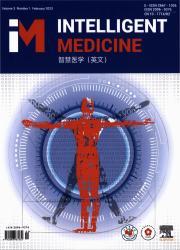Neuroimaging in narcolepsy
IF 6.9
Q1 COMPUTER SCIENCE, INTERDISCIPLINARY APPLICATIONS
引用次数: 0
Abstract
Narcolepsy is a chronic neurological disorder that disrupts the sleep-wake cycle and manifests in symptoms like excessive daytime sleepiness (EDS), cataplexy, and rapid transitions into rapid eye movement (REM) sleep. Its variable prevalence, genetics, and clinical presentations pose considerable challenges in diagnosis and management. Here, we synthesized the advances in neuroimaging techniques and their substantial contributions to the narcolepsy complex pathology. We analyzed the structural magnetic resonance imaging (MRI) scan findings that highlight gray matter reductions and cortical thinning in patients with narcolepsy. Additionally, we explored findings from diffusion tensor imaging (DTI) scans that shed light on compromises in white matter integrity. Functional MRI and positron emission tomography (PET) scan studies further illuminated neurochemical deficits and altered brain connectivity. The implications of these findings extend beyond diagnosis, suggesting potential targets for neuromodulation therapies and calling for larger, more standardized studies to enhance both our understanding and treatment approaches for narcolepsy. Despite such advances, this field continues to meet challenges, including limitations in sample size and the need for comprehensive longitudinal and multimodal studies. This review highlighted the potential of neuroimaging combined with machine learning and advanced analytics, which help to discover novel biomarkers, refine the comprehension of narcolepsy and its neurochemical intricacies, and improve the therapeutic strategies.
发作性睡病的神经影像学
嗜睡症是一种慢性神经系统疾病,它会扰乱睡眠-觉醒周期,表现为白天过度嗜睡(EDS)、猝厥和快速过渡到快速眼动睡眠(REM)。其不同的患病率,遗传学和临床表现构成了相当大的挑战,在诊断和管理。在这里,我们综合了神经成像技术的进展及其对发作性睡症复杂病理的重大贡献。我们分析了结构磁共振成像(MRI)扫描结果,突出了发作性睡病患者的灰质减少和皮层变薄。此外,我们探索了扩散张量成像(DTI)扫描的发现,揭示了白质完整性的妥协。功能性MRI和正电子发射断层扫描(PET)研究进一步揭示了神经化学缺陷和大脑连接的改变。这些发现的意义超出了诊断,提示了神经调节疗法的潜在目标,并呼吁进行更大规模、更标准化的研究,以增强我们对发作性睡病的理解和治疗方法。尽管取得了这些进展,但这一领域仍面临挑战,包括样本量的限制以及需要进行全面的纵向和多模式研究。这篇综述强调了神经成像与机器学习和高级分析相结合的潜力,这有助于发现新的生物标志物,完善对发作性睡病及其神经化学复杂性的理解,并改进治疗策略。
本文章由计算机程序翻译,如有差异,请以英文原文为准。
求助全文
约1分钟内获得全文
求助全文
来源期刊

Intelligent medicine
Surgery, Radiology and Imaging, Artificial Intelligence, Biomedical Engineering
CiteScore
5.20
自引率
0.00%
发文量
19
 求助内容:
求助内容: 应助结果提醒方式:
应助结果提醒方式:


